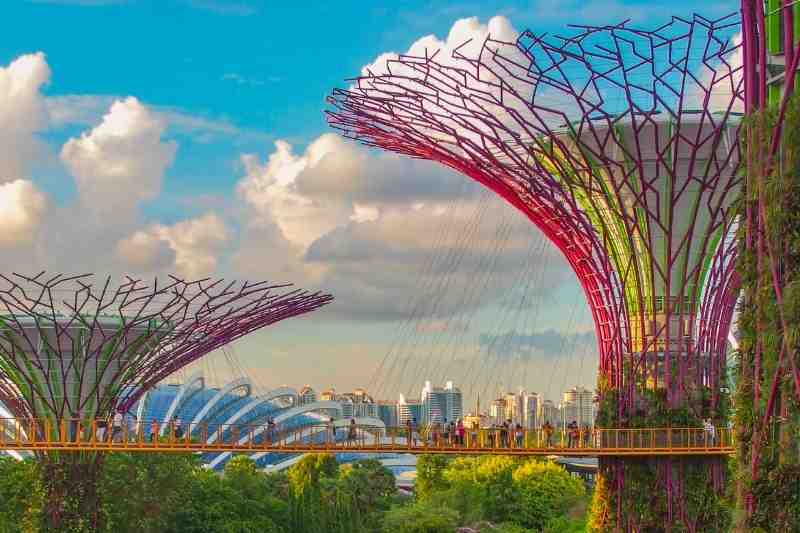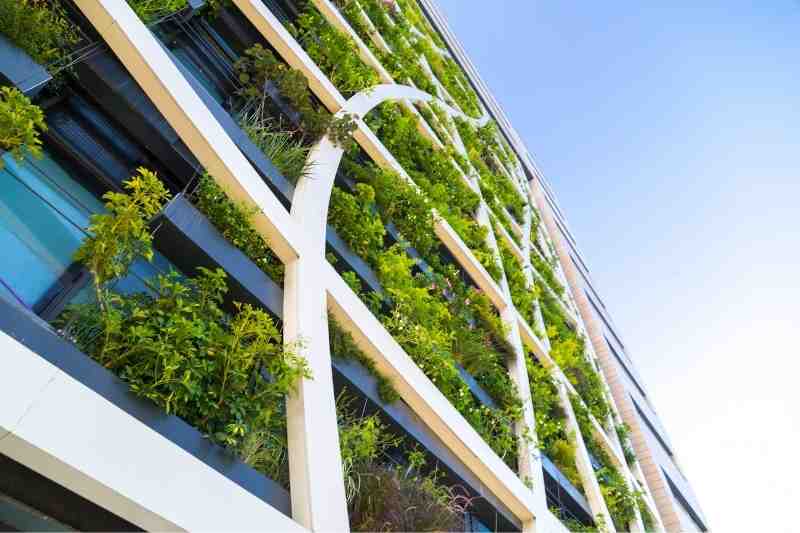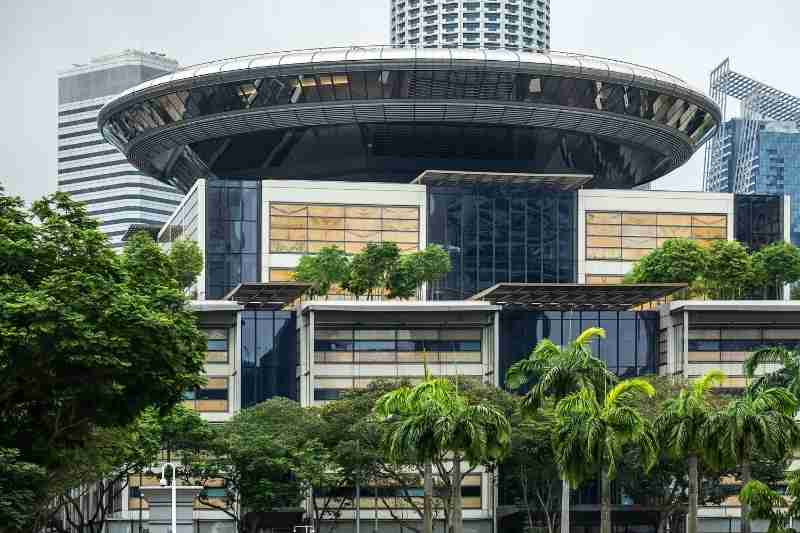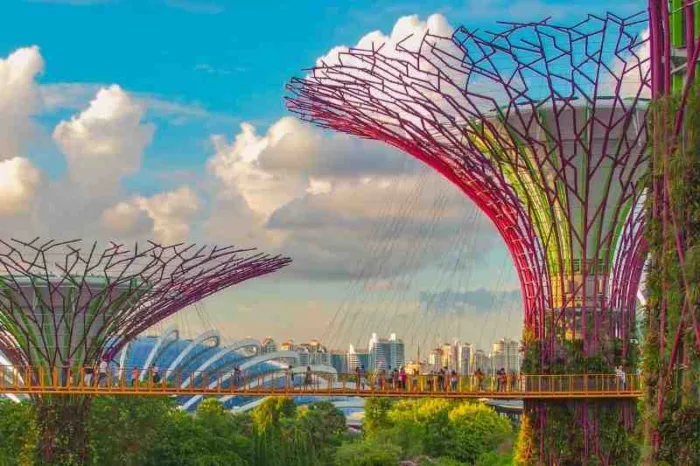
Takeaways
- Biophilic design is an architectural movement that significantly improves the way people work, live, and interact with buildings.
- Multifamily owners and operators can learn a lot from how biophilic design emphasizes greenery, foliage, and the natural world.
- Highlighting biophilic design’s mental, physical, and climate-friendly benefits is a great way to improve the resident experience.
If you’re a multifamily operator, you must stay on top of the latest design trends. Creating a world-class resident experience means constantly anticipating the needs of your residents. And when residents prioritize sustainability and a connection to the natural world, what can you do to adapt?
Biophilic design is a trend energizing architecture and the real estate industry. Read on to find out what biophilic design is and learn how you can use it to make your multifamily property stand out.
This post covers:
- What are the fundamentals of biophilic design?
- What are the 5 senses of biophilic design?
- Top benefits of biophilic design
- Attracting and retaining residents with biophilic design
- How to manage and maintain biophilic design with proptech
What are the fundamentals of biophilic design?
Biophilic design is an architectural movement that introduces elements of nature into a building’s architecture and design. While the prefix ‘bio’ might imply a singular focus on green elements like planting trees or foliage, biophilic design also prioritizes other natural elements — like open air, sunlight, or running water — that allow a building’s residents to establish a connection to nature.
When you get down to it, biophilic design attempts to reconnect humanity to its natural roots. The first humans evolved millions of years ago. That’s millions of years’ worth of hunting, gathering, and cultivating a direct, communal connection to the natural world. In comparison, humans have only been living in cities for a few thousand years.
Problems like pollution, overcrowding, lack of sunlight, overexposure to computer screens, and other consequences of modern city life are recent developments that people simply aren’t built to handle. So, today’s architects and designers are responding to these issues by creating new spaces that incorporate biophilic design.
Discover the top five multifamily design trends:
Examples of biophilic design
Skyscrapers recently completed around the world are garnering praise for incorporating biophilic design trends. The Oasia Hotel in Singapore, for example, won the Global Award for Excellence from the Urban Land Institute in 2017.
The Oasia Hotel is a stunning 27-story skyscraper whose facade blooms with greenery. A wide variety of plants have been integrated into the Oasia Hotel’s exterior, from bright, multicolored flowers to 33 different types of trees. This greenery brightens Singapore’s landscape and provides many benefits to building residents. Other nature-inspired elements include sky terraces and open-air atriums.
For an example closer to home, consider Microsoft’s headquarters outside Seattle. Microsoft invested in WiFi-equipped treehouses that serve as meeting rooms and working spaces, with features like hand-carved chairs and the fragrant smells of cedarwood. And according to Microsoft, employee satisfaction skyrocketed soon after.
However, you don’t need to be a tech giant or a skyscraper developer to embrace the benefits of nature. Whether installing a rooftop garden or placing a few more potted plants in the lobby, you can make biophilic design work for your multifamily property.
What are the 5 senses of biophilic design?
When designing a biophilic building, it’s important to keep the five senses in mind.
The five senses of biophilic design are:
- Touch. Touching organic matter, such as plants and gardens, tends to harm the organisms themselves. However, residents can feel the warmth of sunlight and soothing breezes from open-air spaces.
- Smell. Biophilic design that includes wonderful-smelling plants (especially in the spring and summer) makes it easy to check off this sense requirement.
- Sight. Green grass, leaves, and the unique biodiversity of plants and vegetation help your residents feel more immersed in the natural world.
- Hearing. A truly biophilic property will attract wildlife, such as birds, which residents will be delighted to listen to.
- Taste. While seemingly a tricky sense to tackle when designing a building, it’s also relatively simple to accomplish. A true biophilic property will likely include a garden of sorts. Whether this results in multiple fresh crops or just a few tomatoes, a biophilic element that gives back to your community is one to pay attention to.
What are the problems of biophilic design?
There are a few challenges when it comes to biophilic design that you should be aware of.
Struggles and problems with biophilic design include:
- Unique maintenance. Biophilic design requires a lot of upkeep. You’ll need to employ multiple gardeners, hedge trimmers, and other specialty providers in order to keep the organic parts of your design healthy, alive, and visually appealing.
- Cost. Unconventional design often means you pay a premium to have it done. There are fewer builders, materials, and experts when it comes to biophilic design, which means they will likely charge more.
- Space. The biggest hurdle to biophilic design is whether or not you have the space for it. Knowing how to utilize the limited space you have can be the biggest puzzle.
What is the difference between feng shui and biophilic design?
Feng shui is more about mood and art, and as a result, it has multiple unique definitions. One person’s idea of ideal feng shui (such as dark, moody colors and ambient design) might not be enticing to everybody.
Conversely, biophilic design elements are based on scientific studies and the psychological connection between humans and nature. Sunlit spaces, lots of trees and plants, and natural environments appeal to people on a different level. However, some elements of feng shui (such as art and style) can incorporate elements of biophilic design.

Top benefits of biophilic design
Biophilic design has positive benefits for your residents’ mental health, their physical well-being, and the sustainability of your building.
Mental health
Emphasizing nature and sunlight does wonders for a person’s mood, productivity, and creativity. Compared to a darkened or cramped cubicle or apartment, an open-air space designed with nature in mind is a much more relaxed environment.
Interestingly, in some circumstances, you don’t even need any living greenery to reap the mental health benefits of a biophilic space. Fixtures like wooden furniture or architectural details that bring to mind natural elements are the backbone of any biophilically designed space.
Physical well-being
Plants and plant walls do more than bolster mental health. Plants also naturally produce negative ions, which are the same molecules used by many air purifiers to remove dust, mold, and bacteria in the air.
Air circulation is also important for your residents’ quality of life. By emphasizing air circulation, you’ll cut down on excess humidity. You’ll also decrease your residents’ chances of dealing with pollutant-related ailments like asthma or sinus problems.
Sustainability
An emphasis on greenery does wonders for a building’s sustainability, especially in a dense urban area. In addition to their mental and physical benefits, plants can also address many of the pollution problems inherent to city life.
Foliage is a great way to suck CO2, nitrogen, car exhaust, and other pollutants out of the air while producing oxygen. Plants have also been shown to reduce the temperatures of their immediate areas. And that’s not just a summertime benefit. If you plant deciduous (leaf-bearing) trees, you’ll cool your property in the summertime. And in the winter, you guarantee your residents ample sunlight.
Attracting & retaining residents with biophilic design
When your multifamily property emphasizes residents’ mental health, physical health, and sustainability, you’ve positioned yourself as one of the most desirable buildings on the market. And by doing so, you could see an increase in prospective resident applicants and lease renewals and a decline in resident complaints.
Attracting new residents
Younger generations like Gen Z and millennials prioritize sustainability and environmentally friendly living practices. You must embrace the sustainability that comes with biophilic design. This way, you can market your property as an eco-friendly space doing its part to combat climate change.
By advertising your property’s nature-based additions, you’ll attract the next generation of residents. Three in four millennials are willing to pay more for sustainable products. And by investing in biophilic design, you’ll align yourself with those values. Market your property digitally by starting a blog or an email list that you can use to talk about the biophilic additions you’ve made.
Additionally, you can implement biophilic design as part of your DIY apartment upgrades or staging strategy. Upgrading or staging vacant units with plants and other organic elements will make them more appealing to prospects and could lead to a higher conversion rate.
Retaining residents
While attracting new residents is important, it’s equally as important to retain your existing residents.
Remember that biophilic design’s emphasis on nature doesn’t just come with health and wellness benefits for your residents. There are psychological benefits, too. Increasing your property’s connection to nature will help your property feel more like a home to your residents. And when your residents feel a deep connection to your property, they’re more likely to renew their leases.

How to manage & maintain biophilic design with proptech
Now that you know that biophilic design offers benefits that will help you attract and retain tenants, you’re ready to make the principles of biophilic design work for you. But don’t worry if you lack a green thumb. By investing in proptech, or property technology, you can combine the efficiencies of technology and the calming properties of nature to create an exceptional living experience for your residents.
For example, if you’ve planted a few flowers or trees on your property, irrigation is now a higher priority. So, you might want to install smart pipe monitors that can detect failures in your water system before they happen and notify you. In emergencies, some smart pipes can even shut off automatically if they detect a problem.
To keep up with the new eco-friendly themes that come with biophilic design, you might also want to install solar panels that will improve your building’s energy efficiency.







